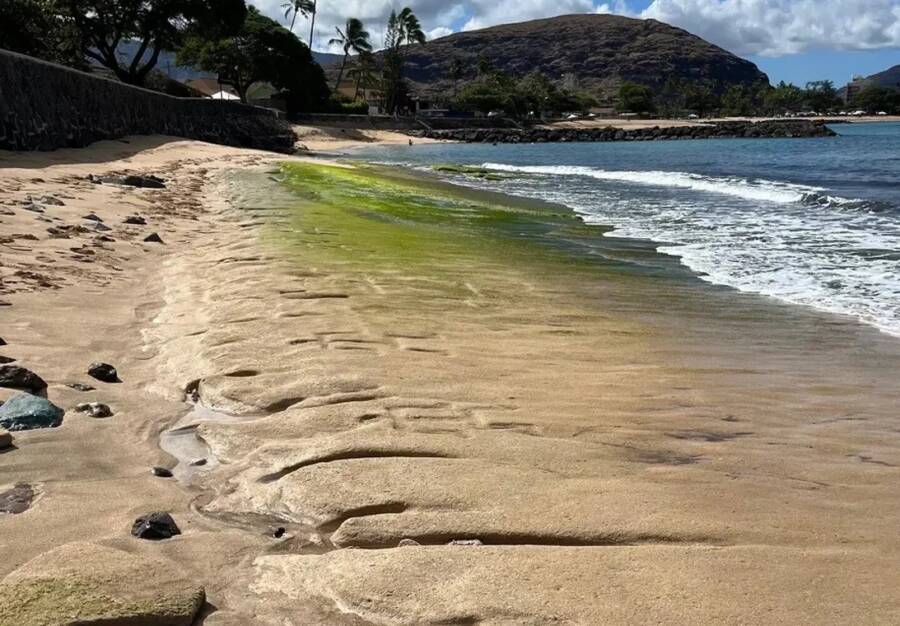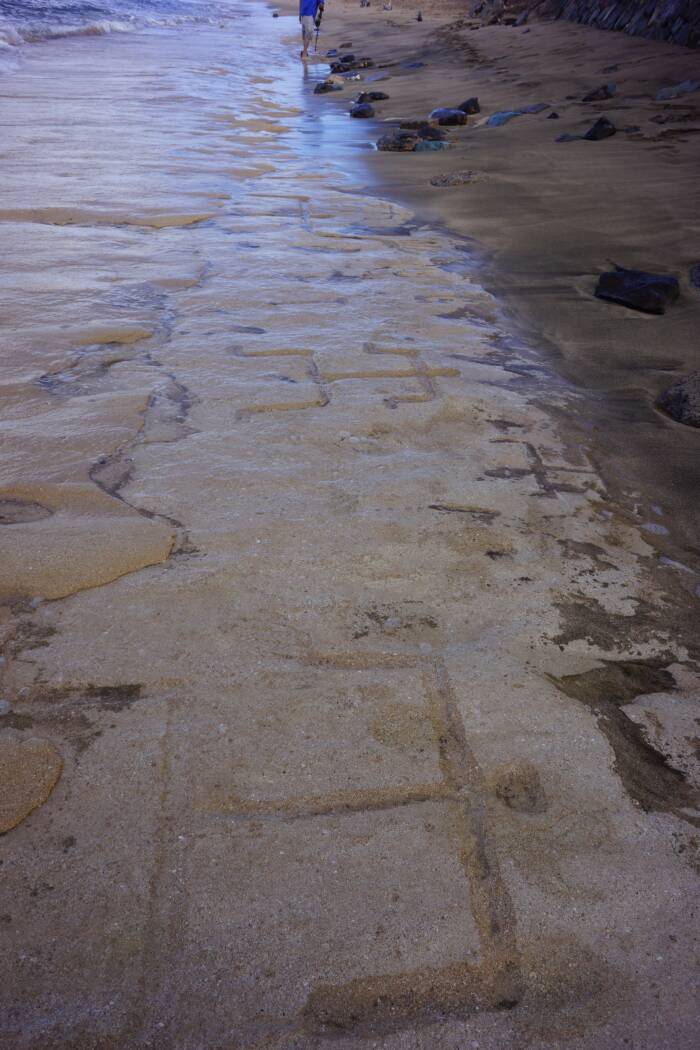Waves recently washed away the top layer of sand on a beach in Oahu and revealed 26 petroglyphs that could date as far back as 1,000 years.

U.S. Army Garrison HawaiiThese centuries-old petroglyphs stretch across 115 feet of beach in Waianae.
In 2016, two tourists staying on the Hawaiian island of Oahu were walking along the beach at Waianae when they noticed something curious in the surf: a row of carvings in the sand. Only revealed when the island’s shifting tides are just right, these petroglyphs had gone unnoticed for centuries, and they vanished again shortly after they were spotted. But now, these astonishing carvings have emerged once more.
Estimated to be at least 500 years old and perhaps as much as 1,000, these petroglyphs are a stunning remnant of Hawaii’s Indigenous past — and some native Hawaiians believe that there’s a reason they’ve reemerged now.
Centuries-Old Hawaiian Petroglyphs Are Revealed On A Beach In Oahu
According to a press release from the Hawaii Department of Land and Natural Resources at the time of the 2016 appearance, it’s likely that the petroglyphs had been visible before. However, 2016 marked the first time that experts from the State Historic Preservation Division and the U.S. Army, which controls the area, were able to take a close look.

Hawaii Department of Land and Natural ResourcesA closer look at one of the petroglyphs, which are periodically exposed by the tides in Oahu.
Officials ultimately counted 26 petroglyphs carved into the sandstone, extending 115 feet along the shoreline. These petroglyphs are a mix of both geometric shapes and various humanoid figures. Some have fingers, which is rare among Hawaiian petroglyphs. The largest of the anthropomorphic figures is more than eight feet tall.
“The ones with the fingers, for me, are pretty unique,” U.S. Army archaeologist and Waianae native Alton Exzabe noted in the 2016 press release. “I believe there are some elsewhere with fingers, but fingers and hands are pretty distinct, as well as the size of them.”
Experts estimate that the petroglyphs are at least 500 or 600 years old, but it’s possible that they’re much older and may have been carved by the initial settlers who first arrived in Waianae around 1,000 years ago.

Hawaii Department of Land and Natural ResourcesThe petroglyphs include 26 figures, most of them humanoid in nature.
Ultimately, however, researchers didn’t have long to study these petroglyphs nine years ago. Shortly after they first appeared, the carved figures disappeared beneath the sand and surf once again.
But wow, they’ve resurfaced.
The Significance Of The Hawaiian Petroglyphs At Waianae

Hawaii Department of Land and Natural ResourcesOne of the Hawaiian petroglyphs as seen from above. Some of the figures had fingers, which is rare among Hawaiian petroglyphs.
Back in 2016, the petroglyphs were exposed after a series of late spring and summer storms, including hurricanes, which shifted the sands in Waianae. This time, their emergence appears to be due to a normal set of seasonal circumstances, namely the low-pressure weather systems that form in the Pacific Ocean between May and November. These have the effect of pulling loose sand from the shoreline deeper into the ocean.
But according to Native Hawaiian cultural practitioner Glen Kila, whose family has been in Waianae for generations, there may be another reason that the petroglyphs were exposed.
Speaking to the Associated Press, Kila suggested that the emergence of the petroglyphs was a sign from his ancestors: “It’s telling the community that the ocean is rising.”
Furthermore, according to Kila, the petroglyphs tell a story. He suggested that the largest figure among the petroglyphs — one of the figures with fingers — has one arm up and one arm down, meant to represent the sunrise and sunset, a nod to the importance of natural cycles in Indigenous Hawaiian beliefs. Kila has also stated that this large figure may be the legendary folk hero and demigod Maui, who is said to have pulled the Hawaiian Islands up from the ocean’s depths using his magic fishhook.
Overall, the petroglyphs are a powerful symbol of Indigenous Hawaiian history and a reminder of who came before, which is especially potent given that the carvings are now located on U.S. Army property.
In the end, many questions about the petroglyphs remain. But for a brief moment before the tides swallow them up again, they’re a unique and fascinating look at Indigenous Hawaiian history and lore.
After reading about these centuries-old petroglyphs in Hawaii, discover the story of Taylor Camp, the idyllic but controversial hippie compound that thrived in Hawaii in the 1970s. Then, learn about Queen Liliuokalani, the last ruler of the Hawaiian kingdom.





